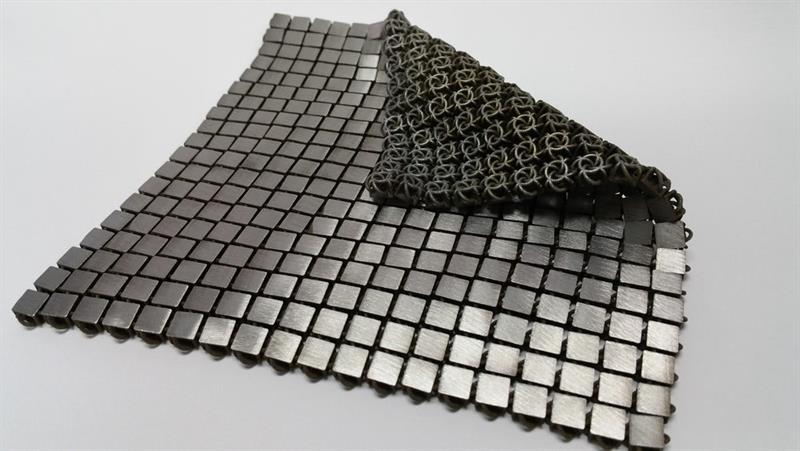According to NASA, these fabrics could potentially be useful for large antennas and other deployable devices, because the material is foldable and its shape can change quickly. The fabrics could also eventually be used to shield a spacecraft from meteorites, for astronaut spacesuits, or for capturing objects on the surface of another planet. Another potential use might be to insulate a spacecraft on icy moons like Jupiter's Europa. At the same time, this flexible material could fold over uneven terrain, creating ‘feet’ that won't melt the ice under them.
The prototypes that Polit Casillas’ team have created look like chain mail, with small silver squares strung together. But these fabrics were not sewn by hand; instead, they were created in one piece, layer by layer, with additive manufacturing technologies.
“We call it '4D printing' because we can print both the geometry and the function of these materials,” said Polit Casillas. “If 20th Century manufacturing was driven by mass production, then this is the mass production of functions.”
Andrew Shapiro-Scharlotta of JPL, whose office funds research for early-stage technologies like the space fabric, said that fabricating spacecraft designs can be complex and costly, but adding multiple functions to a material at different stages of development could make the whole process cheaper. It could also open the door to new designs.
 “We are just scratching the surface of what's possible,” Shapiro-Scharlotta added. “The use of organic and non-linear shapes at no additional costs to fabrication will lead to more efficient mechanical designs.”
“We are just scratching the surface of what's possible,” Shapiro-Scharlotta added. “The use of organic and non-linear shapes at no additional costs to fabrication will lead to more efficient mechanical designs.”
The space fabrics have four essential functions: reflectivity, passive heat management, foldability and tensile strength. One side of the fabric reflects light, while the other absorbs it, acting as a means of thermal control. It can fold in many ways and adapt to shapes while still being able to sustain the force of pulling on it.
The JPL team not only wants to try out these fabrics in space someday, they want to be able to manufacture them in space, too.
This kind of design-based thinking could revolutionise the way spacecraft are engineered. Instead of having to assemble something with dozens of parts, all of which create potential points of failure, the spacecraft of the future could be created ‘whole cloth’ - and with added functionality.











